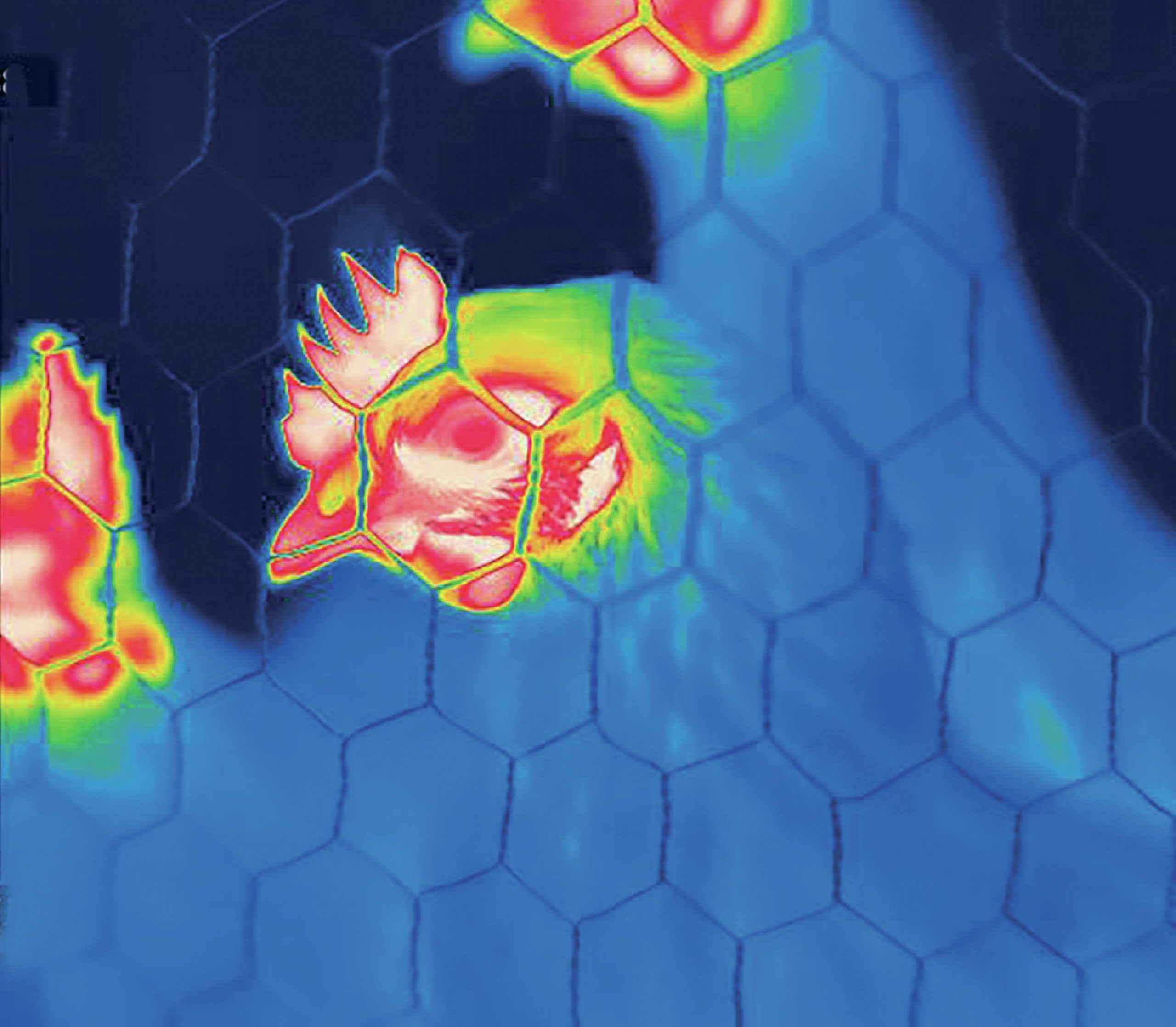
Thermal images of animals can provide an insight into their wellbeing. Thermal imaging measures the temperature of a surface from the infrared radiation that it emits. The technique uses thermo-physical principles. Heat is converted to colour, allowing us to visualise the surface temperature of animals in real time, as they experience changing environmental conditions. As a pure measure of heat loss, energy costs and expenditure may be calculated from these images. But, intriguingly, changes in skin temperature also have the potential to reveal changes in the mental state of the animal.
When an animal is exposed to a stressful situation, such as an encounter with a predator, or a challenge to fight, vasoconstriction happens in the skin. This causes blood, and hence heat, to move from the body surface into its core, which cools the skin. These are just some of many physiological changes that occur under acute stress, such as increased heart rate, breathing rate and metabolic rate, all of which prepare the body to respond to the stressor.
Your organisation does not have access to this article.
Sign up today to give your students the edge they need to achieve their best grades with subject expertise
Subscribe




